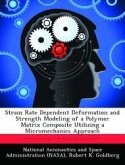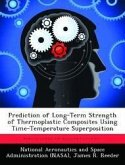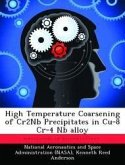Polymer matrix composites are increasingly used in demanding structural applications in which they may be exposed to harsh environments. The durability of such materials is a major concern, potentially limiting both the integrity of the structures and their useful lifetimes. The goal of the current investigation is to develop a mechanism-based model of the chemical degradation which occurs, such that given the external chemical environment and temperatures throughout the laminate, laminate geometry, and ply and/or constituent material properties, we can calculate the concentration of diffusing substances and extent of chemical degradation as functions of time and position throughout the laminate. This objective is met through the development and use of analytical models, coupled to an analysis-driven experimental program which offers both quantitative and qualitative information on the degradation mechanism. Preliminary analyses using a coupled diffusion/reaction model are used to gain insight into the physics of the degradation mechanisms and to identify crucial material parameters. An experimental program is defined based on the results of the preliminary analysis which allows the determination of the necessary material coefficients. Thermogravimetric analyses are carried out in nitrogen, air, and oxygen to provide quantitative information on thermal and oxidative reactions. Powdered samples are used to eliminate diffusion effects. Tests in both inert and oxidative environments allow the separation of thermal and oxidative contributions to specimen mass loss. The concentration dependency of the oxidative reactions is determined from the tests in pure oxygen. Short term isothermal tests at different temperatures are carried out on neat resin and unidirectional macroscopic specimens to identify diffusion effects. Mass loss, specimen shrinkage, the formation of degraded surface layers and surface cracking are recorded as functions of exposure time.
Hinweis: Dieser Artikel kann nur an eine deutsche Lieferadresse ausgeliefert werden.
Hinweis: Dieser Artikel kann nur an eine deutsche Lieferadresse ausgeliefert werden.








